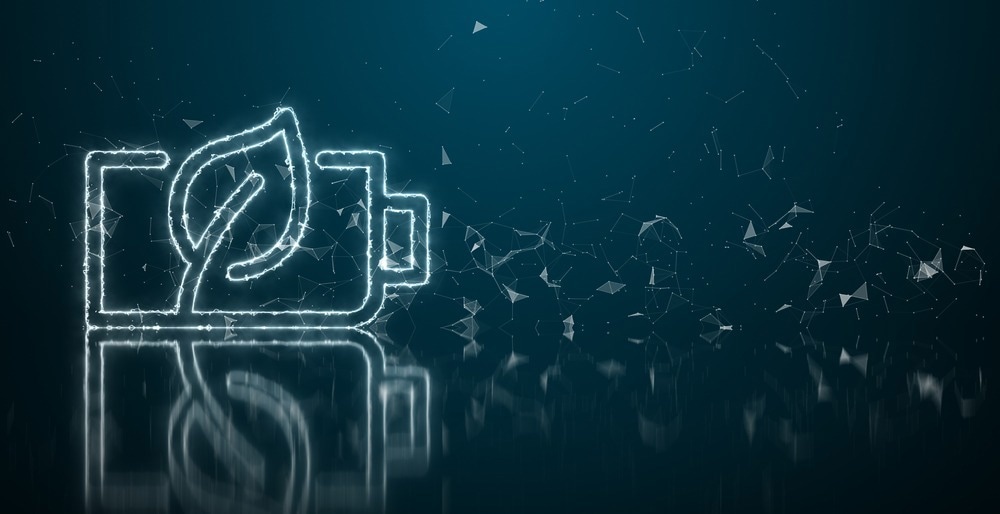A pre-proof paper from the journal Electrochimica Acta focuses on developing Dibismuthoxysulfide nanosheets anchored on reduced graphene oxide (Bi2O2S@rGO) as multifunctional anode materials for high-performance aqueous rechargeable alkaline batteries (ARABs) using a simple one-step hydrothermal process.

Study: Bi2O2S nanosheets anchored on reduced graphene oxides as superior anodes for aqueous rechargeable alkaline batteries. Image Credit: Immersion Imagery/Shutterstock.com
Aqueous Rechargeable Alkaline Batteries: Advantages and Limitations
With the fast growth of green and sustainable energy, there is a need to create an energy storage system that is both safe and cost-effective, with high power and energy densities.
Aqueous rechargeable alkaline batteries (ARABs) have sparked intense research interest due to their unique qualities, such as excellent safety, strong ionic conductance, and cheap cost. Due to the phase transition that occurs on the electrodes, aqueous rechargeable alkaline batteries often have good specific capacities when compared to supercapacitors.
Many aqueous rechargeable alkaline batteries (ARABs) have weak kinetics and low cycling stabilities, resulting in structural displacement at the anode and dendrite growth during the charging/discharging process. As a result, it is critical to manufacture novel, stable, and long-lasting anode materials for high-performance aqueous rechargeable alkaline batteries (ARABs).
Bismuth (Bi)-Based Materials as Anodes for ARABs
Bismuth-based materials are suitable anodes for ARABs because of their ecological compatibility, adequate negative voltage level, and quick three-electron electrochemical reactions in aqueous electrolytes. Furthermore, the intrinsic metallic characteristics of bismuth and its low molecular weight provide various practical benefits, such as strong conductance and high theoretical potential.
Many nanostructured Bi-based materials have been produced as anodes for energy storage devices. However, the practical applicability of traditional bismuth-based anodes is hampered by their poor endurance and specific capacity.
Bi2O2S, a two-dimensional (2D) stacked bismuth oxygen chalcogenide complex, has lately shown significant promise for high-performance semiconductors and optoelectronic applications. It has a narrower bandgap of 1.12 eV than standard Bi-based anodes, resulting in higher conductivity.
A well-designed heterostructure combining Bi-based and carbonaceous materials can improve the overall electrolytic efficiency of aqueous rechargeable alkaline batteries (ARABs).
Development of Novel Bi2O2S@rGO Nanosheets
In this work, the researchers created a Bi2O2S/rGO nanosheet composite as a new anode material for aqueous rechargeable alkaline batteries (ARABs), inspired by the distinctive structural characteristics of two-dimensional (2D) materials with a rapid ion diffusion channel and reasonably robust structure.
The specimen microstructure was examined and analyzed using a scanning electron microscope (SEM). A transmission electron microscope (TEM) was used to examine the sample's microstructure and to study the dispersion of each component on the composite material using the element surface distribution test. The crystalline structure of the composites was determined using an X-Ray diffraction (XRD) analyzer.
The samples' chemical condition and the components' proportional content ratio were examined using X-Ray photoelectron spectroscopy (XPS). The morphology of the composites was identified and analyzed using Raman spectroscopy.
Important Findings of the Study
In this study, the researchers created a novel two-dimensional material, Bi2O2S@rGO heterojunction nanocomposite, using a one-pot hydrothermal fabrication process as the anode material for nickel-bismuth aqueous rechargeable alkaline batteries (ARABs).
XRD investigation revealed that Bi2O2S nanosheets develop evenly on the graphene sheet surface, with average lateral sizes varying between 300-400 nm. As a result, the as-prepared thin graphene nanosheets possess outstanding electrical conductance and enhance Bi2O2S electrochemical performance.
Transmission electron microscopy (TEM) images of Bi2O2S@rGO revealed that the material had a consistent quadrangular sheet-like structure at low magnification.
The researchers employed the as-prepared materials as working electrodes in ARABs, and pertinent electrochemical experiments were carried out to assess the electrocatalytic activity. It was discovered that the prepared thin nanosheet composites could combine the benefits of each material to provide a cumulative effect that boosts the performance of the ARABs.
The researchers further concluded that the as-optimized Bi2O2S@rGO nanosheet anodes had a higher specific capacity than typical bismuth-based anodes. Aqueous rechargeable alkaline batteries (ARABs) using Bi2O2S@rGO nanosheets as the anode and nickel-based material as the cathode demonstrated high power density, high energy concentrations, and outstanding cycling durability, with a capacity retention rate of 92.74 percent after 5,000 cycles.
Based on these results, it is reasonable to conclude that the technique used in this work to fabricate bismuth-based anodes for aqueous rechargeable alkaline batteries (ARABs) may open up new possibilities for the development of eco-friendly and high-performance anode materials.
Reference
Liu, Y.-L. et al. (2022). Bi2O2S nanosheets anchored on reduced graphene oxides as superior anodes for aqueous rechargeable alkaline batteries. Electrochimica Acta. Available at: https://doi.org/10.1016/j.electacta.2022.140833
Disclaimer: The views expressed here are those of the author expressed in their private capacity and do not necessarily represent the views of AZoM.com Limited T/A AZoNetwork the owner and operator of this website. This disclaimer forms part of the Terms and conditions of use of this website.